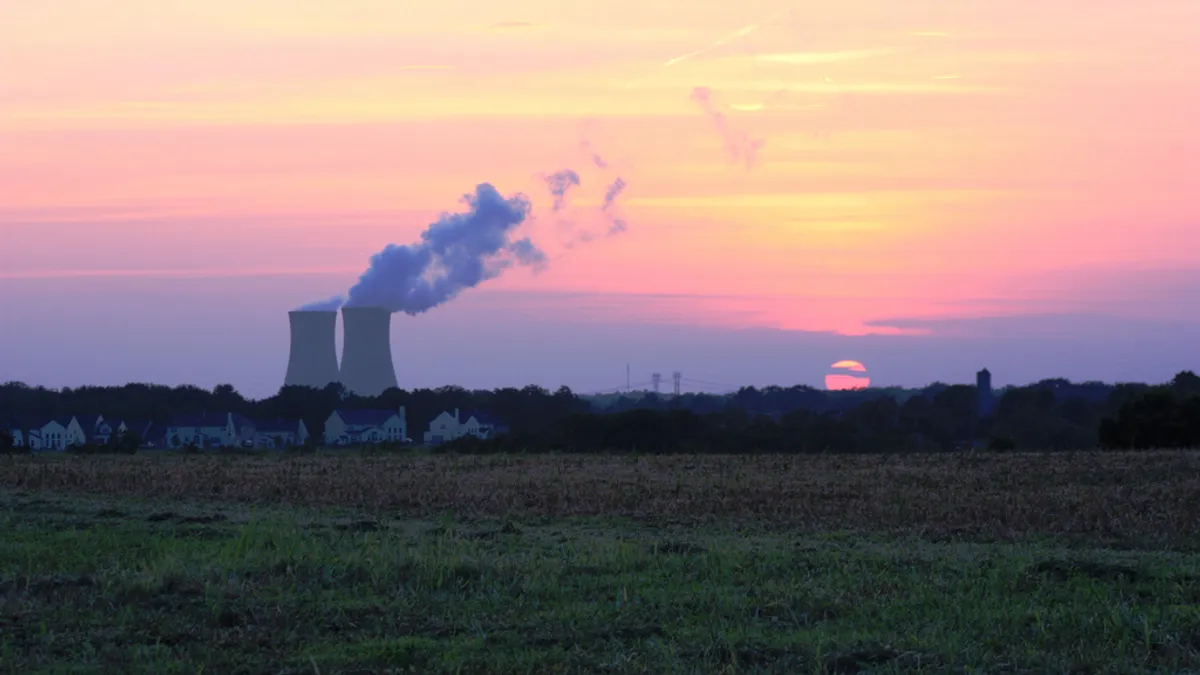Dive Brief:
- Staff of the New York Public Service Commission have revealed the details of a subsidy plan to support upstate nuclear generation in the state, potentially adding hundreds of millions to customer bills in an effort to save the carbon-free generation.
- The subsidies for the Fitzpatrick, Ginna and Nine Mile plants would be put in place for 12 years, starting at up to $482 million a year initially and exceeding $800 million in the final years.
- Subsidies would start at $17.48/MWh, slowly rising to $29.15/MWh in the last two years of the program. Several units in the state have threatened closure, putting New York's clean energy goals at risk.
Dive Insight:
New York regulators are rushing to act where Illinois legislators failed, releasing a proposal to subsidize struggling nuclear generation in the northern part of the state, but it is unclear whether it will be in place in time to save all of the targeted plants.
Exelon has warned it would close the Ginna and Nine Mile plants if the new clean energy standard was not in place by September, and Entergy already plans to close the FitzPatrick plant next year, though it still shows up in the PSC's subsidy plan.
The PSC staff said in its proposal that setting the energy credit levels administratively "makes sense for the upstate Fitzpatrick, Ginna and Nine Mile facilities in the aggregate because it yields a result that staff would expect to be similar to the average pay-as-bid price for these facilities that would result from a competitively bid solicitation conducted in the manner that is currently done for Renewable Energy Credits."
The subsidies are based on anticipated power prices of roughly $39/MWh.
Entergy's Indian Point plant was not included in the initial subsidy proposal because its proximity to large population centers in the southern part of the state gives it access to higher electricity market prices. If the plant one day becomes eligible for subsidies, regulators wrote, the PSC should calculate a value "to reflect the difference between upstate and downstate market revenues in order to put downstate facilities on an equal footing with upstate facilities."
Gov. Andrew Cuomo has pushed to close down Indian Point due to its location within 40 miles of New York City.
New York's subsidy are designed to help the state meet the governor's 50% renewable and nuclear energy goal by 2030. While nuclear, imported hydropower and renewables made up more than half of the state's generation output in 2015, regulators are concerned low-priced natural gas generation would replace retiring nuclear plants in electricity markets, raising emissions and putting the goal in doubt.
The commission opened a short comment period on the proposal, with written input due by July 18. That could set up a vote at the commission's Aug. 1 meeting.
According to staff, investing $965 million in the first two years of the program would help the state see $5 billion in benefits. Critics say the plan could just increase in cost.
“It's sort of a blank check … the plants just get more expensive to operate," Tim Judson, executive director of the Nuclear Information and Resource Service, told Utility Dive after plans for the subsidy package wre first announced. Renewable energy and anti-nuclear advocates would like to see the nuclear plants replaced by other zero-carbon generation sources, similar to a deal struck to retire the Diablo Canyon nuclear plant in California last month.














